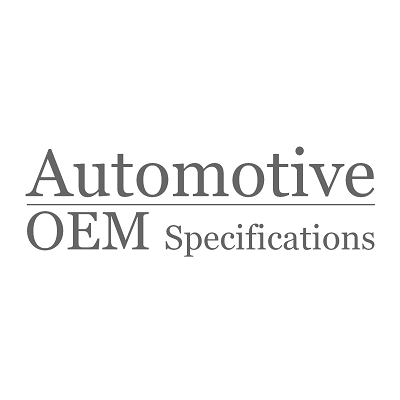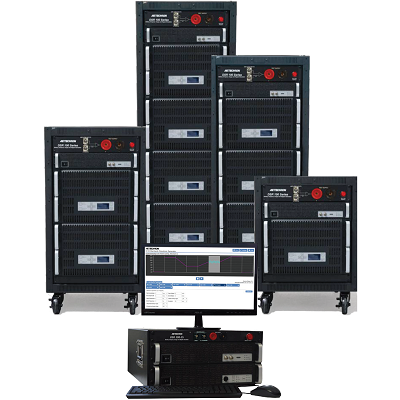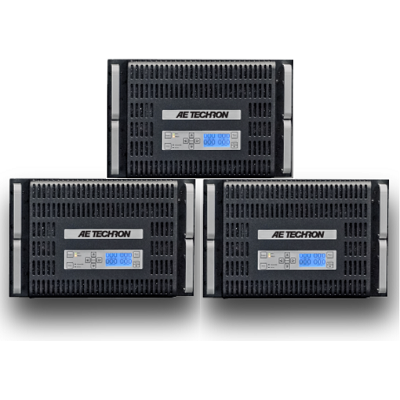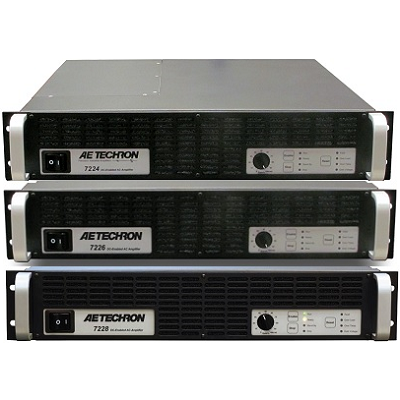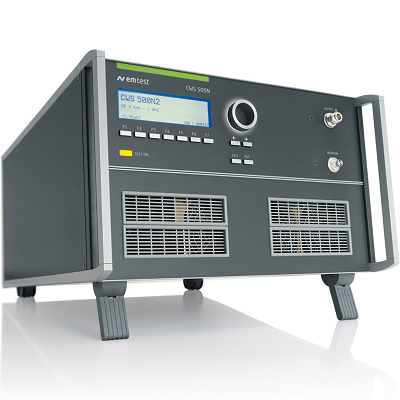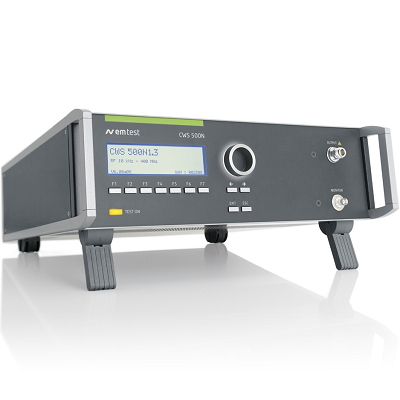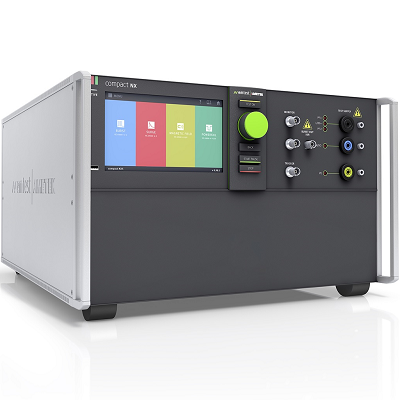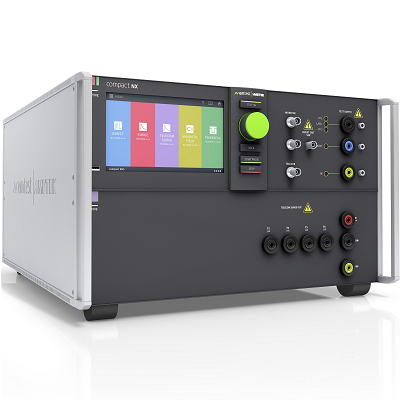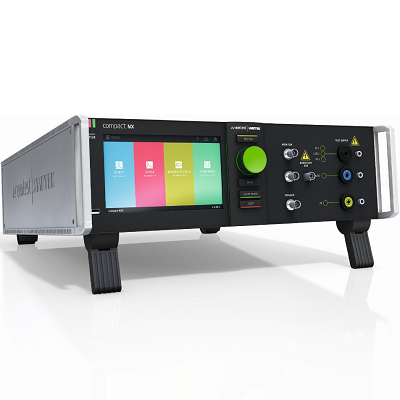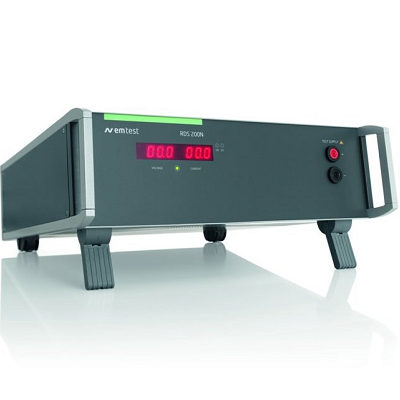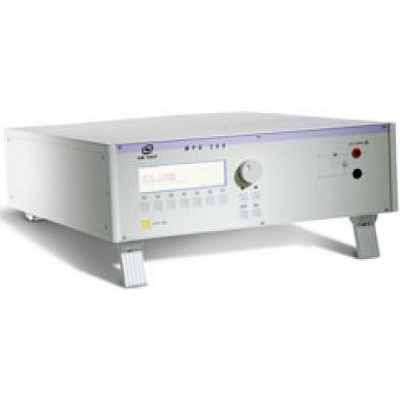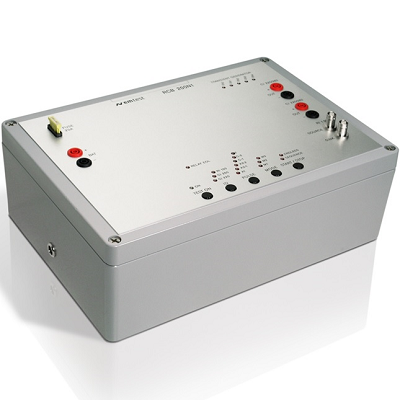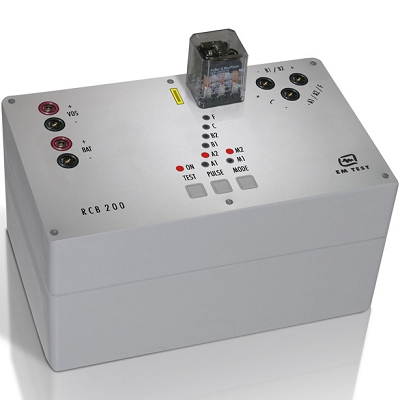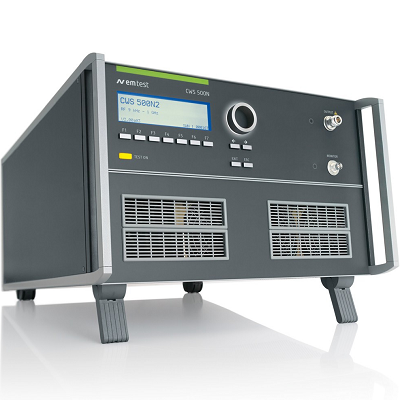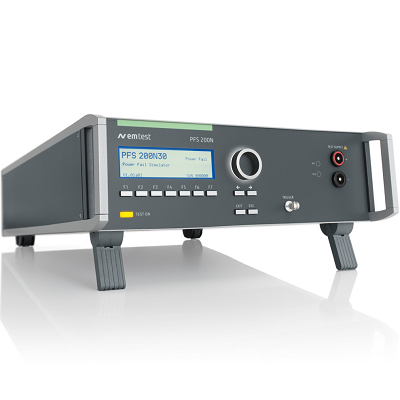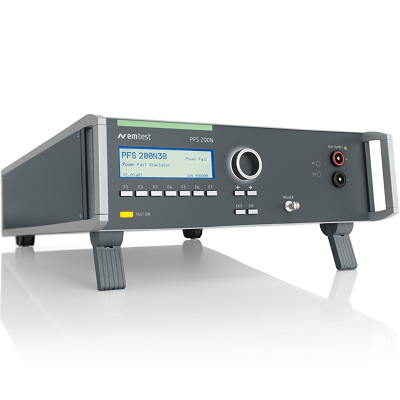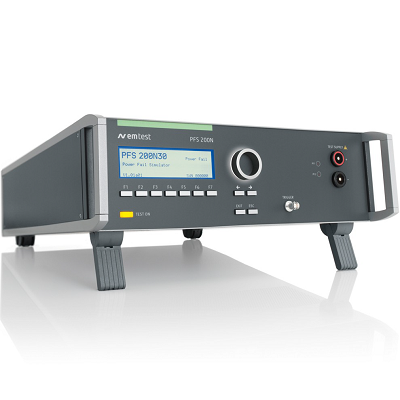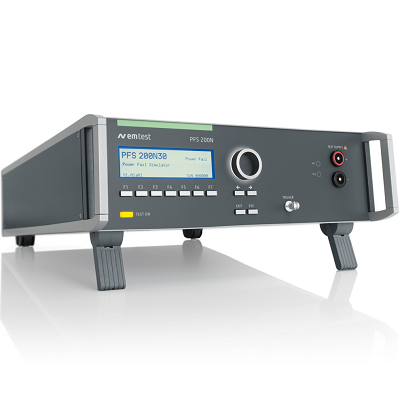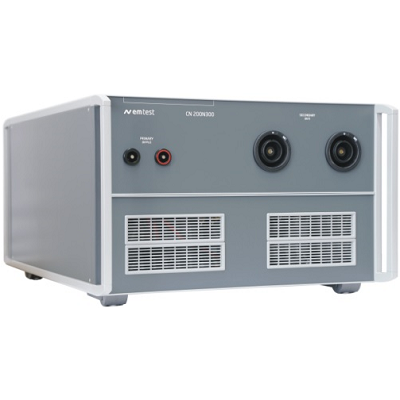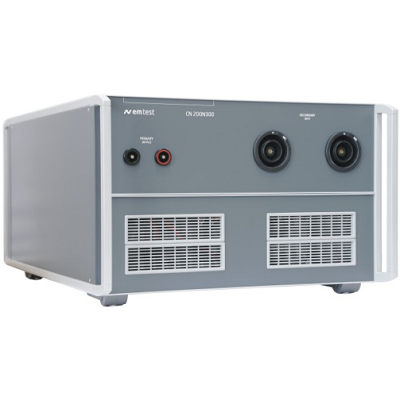
Audi (Reference Vehicles)
Audi (Reference Vehicles) Innovation based on research and development, Audi focuses on applications like automated driving and integration with smart cities and intelligent transportation. Through cooperation with academic institutions, AUDI AG combines scientific theory and modern research with business practice, thus ensuring the transfer of groundbreaking ideas to the company. Learn more about Audi

BMW GS 95002
BMW GS 95002 Electromagnetic Compatibility (EMC) Requirements and Tests EMC requirements for components, devices, systems and the whole vehicle for BMW motor vehicles. The standard consists of the following parts:
- GS 95002-1: General requirements and tests
- GS 95002-2: Requirements and tests on components up to 60 V nominal voltage
- GS 95002-3: Requirements and tests on components > 60V nominal voltage
- GS 95002-4: Requirements and tests total vehicle
- GS 95002-5: Requirements and tests within the frequency range 9 kHz to 30 MHz
- GS 95002-6: Requirements and tests for vehicles according to ICNIRP

BMW GS 95003-2
BMW GS 95003-2Â Electric / Electronic Assemblies in Motor Vehicles Includes the following tests:
- 2.1.1
- Testing for Immunity to 18V Transient
- 2.1.2.b
- Component Immunity to Ripple on Power Supply Leads, Severity Level 1
- Component Immunity to Ripple on Power Supply Leads, Severity Level 1b
- Component Immunity to Ripple on Power Supply Leads, Severity Level 2
- Component Immunity to Ripple on Power Supply Leads, Severity Level 3
- Component Immunity to Ripple on Power Supply Leads, Severity Level 4
- 2.1.3.1
- Slow Decreasing and Increasing of Operating Voltage
- Slow Decreasing and Increasing of Operating Voltage, alternate
- 2.1.3.2
- Slow Decreasing and Fast Rise of Operating Voltage
- 2.1.3.3
- IGR, Development of Voltage
- 2.1.5
- Cranking Profile, Level I
- Cranking Profile, Level Ip
- Cranking Profile, Level II
- Cranking Profile, Level IIp
- Cranking Profile, Level III
- 2.1.6
- Very Brief Voltage Dip
- 2.1.7
- Brief Voltage Dip
- 3.3.1
- Protection Against Polarity Reversal
- 3.3.2
- Protection Against Polarity Reversal for Semiconductor Power Circuit
- 3.4
- Interruption
- 3.5
- Short-circuit Strength
- 3.5.1
- Testing of Inputs and Outputs without Load Circuits

BMW GS 95024-2-1
BMW GS 95024-2-1 Electrical and Electronic Components in Motor Vehicles - Electrical Requirements and Testings Includes the following tests:
- E-01 Long Term Surge
- E-02 Transient Surge, Short
- E-02 Transient Surge, Endurance Test
- E-03 Transient Undervoltage
- E-04 Jump Start
- E-06 Superimposed AC Voltage
- E-07 Slow Decrease and Increase of Supply Voltage, code a
- E-07 Slow Decrease and Increase of Supply Voltage, code b
- E-07 Slow Decrease and Increase of Supply Voltage, code c
- E-07 Slow Decrease and Increase of Supply Voltage, code d
- E-08 Slow Decrease and Rapid Increase of Supply Voltage, code a
- E-08 Slow Decrease and Rapid Increase of Supply Voltage, code b
- E-08 Slow Decrease and Rapid Increase of Supply Voltage, code c
- E-08 Slow Decrease and Rapid Increase of Supply Voltage, code d
- E-09 Reset Behavior, code a
- E-09 Reset Behavior, code a, test sequence 1
- E-09 Reset Behavior, code a, test sequence 2
- E-09 Reset Behavior, code b
- E-09 Reset Behavior, code b, test sequence 1
- E-09 Reset Behavior, code b, test sequence 2
- E-09 Reset Behavior, code c
- E-09 Reset Behavior, code c, test sequence 1
- E-09 Reset Behavior, code c, test sequence 2
- E-09 Reset Behavior, code d
- E-09 Reset Behavior, code d, test sequence 1
- E-09 Reset Behavior, code d, test sequence 2
- E-10 Short Interruptions
- E-11 Start Pulse, Cold Start, Normal
- E-11 Start Pulse, Cold Start, Sharp
- E-11 Start Pulse, Warm Start, Short Test Sequence
- E-11 Start Pulse, Warm Start, Long Test Sequence
- E-12 Voltage Curve with Inelligent Generator Control
- E-13 Interrupt Pin, Loose Contact 1
- Connector Interruption
- E-17 Short Circuit of Signal Lines and Load Circuits, code a
- E-17 Short Circuit of Signal Lines and Load Circuits, code b
- E-17 Short Circuit of Signal Lines and Load Circuits, code c
- E-17 Short Circuit of Signal Lines and Load Circuits, code d
- E-19 Quiescent Current
- E-21 Reverse Power

BMW GS 95026
BMW GS 95026 Electrical and Electronic Components for Motor Vehicles with a 48V Electrical System Test Conditions and Tests Restriction of the Test Procedure:
- Long-term overvoltage
- Transient Overvoltage (short + long)
- Transient process in the lower operating range
- Recuperation
- Superimposed Voltage (Part 1F1+2F1)
- Slow Ramp Down and Ramp Up
- Slow Ramp Down and Fast Ramp Up
- Reset Behaviour
- Start impulses (Cold start: normal+severe)
- Internal Voltage Strength
- Operating in the area without functional limitation
- Operating in the upper area with functional limitation
- Operating in the lower area with functional limitation
- Overvoltage Range
- Undervoltage Range

Chrysler CS-11809
Chrysler CS-11809 (2009) Electrical and Electromagnetic Compatibility (EMC) Performance Requirements - E/E Components Includes the following tests:
- Supply Voltage Range, 6-16VDC
- Supply Voltage Range, 8-16VDC
- Supply Voltage Range, 9-16VDC
- Ignition Draw Off, 12VDC
- Supply Voltage Ripple, 12VDC
- Sneak Path, 12VDC
- Supply Voltage Drop Out, 12VDC
- Supply Voltage Dips, 12VDC
- Engine Cranking Low Voltage, Cold Cranking, 12VDC
- Supply Voltage Ramp Up, 12VDC
- Supply Voltage Ramp Down, 6VDC
- Supply Voltage Ramp Down, 8VDC
- Supply Voltage Ramp Down, 9VDC
- Defective Regulation (Full-Fielded Alternator), 12VDC
- Jump Start, 12VDC
- Reverse Supply Voltage, 12VDC
- Immunity to Short Circuits in the Supply Voltage Input and Load Output Lines, 12VDC
- Immunity to Short Circuits in the I-O Signal Lines, 12VDC
- Ground Reference Offset, 12VDC

Chrysler CS-11979
Chrysler CS-11979 Electrical and Electromagnetic Compatibility (EMC) Requirements for Electronic Components and Sub-assemblies for Chrysler Group Vehicles The following tests are included:
- Supply Voltage Range, 4.5-16VDC
- Supply Voltage Range, 6-16VDC
- Supply Voltage Range, 8-16VDC
- Supply Voltage Range, 9-16VDC
- Supply Voltage Range, 10-16VDC
- Ignition Draw Off (IOD), 12VDC
- Sneak Path, 12VDC
- Supply Voltage Drop Out, 12VDC
- Power Supply Disconnection, 12VDC
- Reset Behavior at Voltage Drop, 12VDC, Code A
- Reset Behavior at Voltage Drop, 12VDC, Code B
- Reset Behavior at Voltage Drop, 12VDC, Code C
- Reset Behavior at Voltage Drop, 12VDC, Code D
- Engine Cranking Low Voltage, Resembling Cold Cranking, 12VDC
- Engine Cranking Low Voltage, Warm Cranking Start-Stop, 12VDC
- Slow Decrease and Increase of Supply Voltage, 12VDC, Code A
- Slow Decrease and Increase of Supply Voltage, 12VDC, Code B
- Slow Decrease and Increase of Supply Voltage, 12VDC, Code C
- Slow Decrease and Increase of Supply Voltage, 12VDC, Code D
- Slow Decrease and Increase of Supply Voltage, 12VDC, Code A, B, C, D
- Supply Overvoltage-Jump Start, 12VDC
- Supply Overvoltage-Defective Regulation, 12VDC
- Reverse Supply Voltage, 12VDC
- Immunity to Short Circuits in the Supply Voltage Input and Load Output Lines, 12VDC
- Immunity to Short Circuits in I-O Signal Lines, 12VDC

Chrysler PF-9326
Chrysler PF-9326 Electrical and Electromagnetic Compatibility Specifications for Electrical and Electronic Modules and Motors This standard is an acceptance specification for the electrical and electromagnetic compatibility (EMC) requirements of electrical and electronic components and modules that reference these standard requirements have been developed to assure compliance with present and prospective domestic and foreign regulations and customer satisfaction regarding the EMC of vehicle E/E systems. This standard applies to electrical and / or electronic components or modules that reference this standard for their EMC requirements. These components are referred to in this standard as the component, Module, motor or using the generic term DUT (device (s) under test). Preview Standard
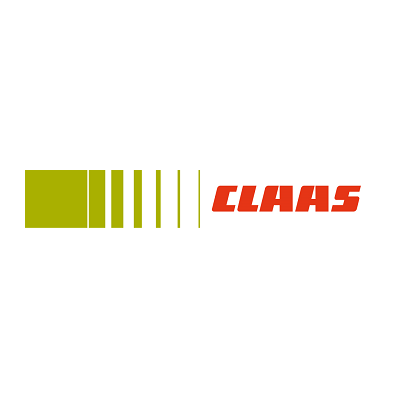
Claas CN 05 0215
Claas CN 05 0215 Environmental Specifications Electrical / Electronics This standard includes the following tests:
- Operating Voltage Range, Test Level 1, 12VDC
- Operating Voltage Range, Test Level 1, 24VDC
- Operating Voltage Range, Test Level 1a, 12VDC
- Operating Voltage Range, Test Level 2, 12VDC
- Operating Voltage Range, Test Level 2, 24VDC
- Overvoltage for 4 hrs and Full Load, 12VDC
- Overvoltage for 4 hrs and Full Load, 24VDC
- Overvoltage for 5min (Jump Start), 12VDC
- Overvoltage for 5min (Jump Start), 24VDC
- Polarity Reversal Protection, 12VDC
- Polarity Reversal Protection, 24VDC
- Slow Decrease and Increase of Supply Voltage, 12VDC
- Slow Decrease and Increase of Supply Voltage, 24VDC
- Reset Behavior on Voltage Drop, 12VDC
- Reset Behavior on Voltage Drop, 24VDC
- Current Input, 12VDC
- Current Input, 24VDC
- Short Circuit Rating, 12VDC
- Short Circuit Rating, 24VDC
- Superimposed Alternating Voltage, 12VDC
- Superimposed Alternating Voltage, 24VDC
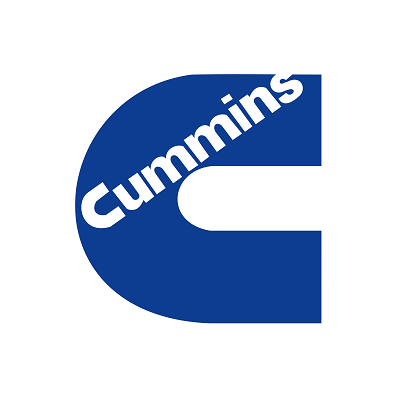
Cummins 14269 (982022-026)
Cummins 14269 (982022-026) - Automotive OEM Specifications The following tests are included in this standard:
- Overvoltage, 12VDC
- Overvoltage, 24VDC
- Overvoltage, Low Voltage
- Reverse Voltage, 12VDC
- Reverse Voltage, 24VDC
- Reverse Voltage, Low Voltage
- Short Circuit, 12VDC
- Short Circuit, 24VDC
- Open Circuits, 12VDC
- Open Circuits, 24VDC
- Electrical Isolation
- Temperature Cycling, Heat Soak, 12VDC
- Temperature Cycling, Heat Soak, 24VDC
- Conducted Transient Immunity, Pulse 4, Cranking, 12VDC
- Conducted Transient Immunity, Pulse 4, Cranking, 24VDC

Cummins 14269 (982022-028)
Cummins 14269 (982022-28) - Automotive OEM Specifications The following tests are included in this standard:
- Overvoltage
- Reverse Voltage
- Power Interrupts
- Keyswitch Decay
- Pulse 4 Cranking
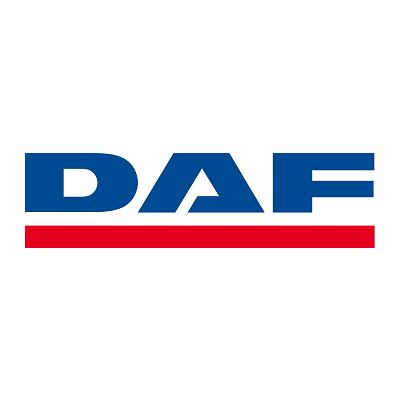
DAF BSL 0006-100
DAF BSL 0006-100 Electrical Requirements for Electrical/Electronic Components/Systems This standard includes the following tests:
- Minimum and Maximum Voltage, 24VDC
- Damage Level or Jump Start
- Voltage Drain Test
- Minimal Currents and Switches
- Reversing Polarity
- Open and Short Circuiting

DaimlerChrysler DC-10613
Chrysler DC-10613 EMC Performance Requirements - Vehicle This joint engineering standard defines the electromagnetic compatibility performance requirements for DaimlerChrysler vehicles and similar to all electrical and electronic components that reference this Standard. The purpose of this joint engineering standard is to ensure electromagnetic compatibility within the vehicle and between the vehicle and its electromagnetic environment. To support this, component requirements and tests are defined in DC-10614. EMC Performance Requirements - Component testing is a qualification of components from the supplier to meet vehicle requirements to the extent that correlation can predict at a time when representative vehicles are not yet available to meeting the requirements for a module or component. The module or component must comply with the requirements of this standard when installed in a representative vehicle. Preview Standard

DaimlerChrysler DC-10614
DaimlerChrysler DC-10614 EMC Performance Requirements - Components This joint engineering standard defines the electromagnetic compatibility requirements for components and subassemblies that contain electrical or electronic components for DaimlerChrysler vehicles and applies to all electrical and electronic components that reference this standard. The purpose of this joint engineering standard is to ensure electromagnetic compatibility (EMC) within the vehicle and between the vehicle and its electromagnetic environment. To support this, bench tests of the component s not installed in a vehicle are described and the permissible emitted disturbances and the immunity requirements are defined in this standard. Deviations from the requirements contained in this standard are only allowed if agreed explicitly between the supplier and the appropriate vehicle line within DaimlerChrysler and documented in the applicable product specification(s). The purpose of component testing is the pre-qualification of components from the supplier at a time when representative vehicles are not yet available. In addition to meeting the requirements for a module or component as specified in this standard, the module or component must comply with DaimlerChrysler Standard DC-10613, EMC Performance Requirements - Vehicle when installed in a representative vehicle. Daimler Chrysler may change the specific requirements for a given component or module, as a result of testing to DC-10613.

DaimlerChrysler DC-10615
DaimlerChrysler DC-10615 Electrical System Performance Requirements for Electrical and Electronic Components This joint engineering standard defines the electrical performance requirements for electrical and electronic components used in DaimlerChrysler vehicles and applies to all electrical and electronic components designed for 12 V nominal voltage that reference this standard. The purpose of this joint engineering standard is to ensure compatibility between the vehicle electrical power system and the electrical and electronic components in the vehicle. To support this, component requirements and tests are defined in this standard. The purpose of component testing is qualification of components from the supplier to meet vehicle requirements at a time when representative vehicles are not yet available. Deviations from the component testing requirements contained in this standard are only allowed if agreed to explicitly and documented between the supplier and the appropriate DaimlerChrysler component design and release engineering department.

DaimlerChrysler DC-10842
DaimlerChrysler DC-10842 Road Vehicles - Electrical System Requirements for E/E Components - Commercial Vehicles Part 1: E/E Performance Test This standard includes the following tests:
- Overvoltage, 12VDC
- Overvoltage, 24VDC
- Failure of Alternator, 12VDC
- Failure of Alternator, 24VDC
- Series Charging of Batteries, 12VDC
- Superimposed Alternating Voltage, severity 1, 12VDC
- Superimposed Alternating Voltage, severity 1, 24VDC
- Superimposed Alternating Voltage, severity 2, 12VDC
- Superimposed Alternating Voltage, severity 2, 24VDC
- Superimposed Alternating Voltage, severity 3, 24VDC
- Test 3 - Starting Profile, 24VDC
- Test 3 - Starting Profile, Level I, 12VDC
- Test 3 - Starting Profile, Level II, 12VDC
- Test 3 - Starting Profile, Level III, 12VDC
- Test 3 - Starting Profile, Level IV, 12VDC
- Reversed Voltage, Case 1, 12VDC
- Reversed Voltage, Case 3, 12VDC
- Reversed Voltage, Case 4, 12VDC
- Open Circuit Test, 12VDC
- Open Circuit Test, 24VDC
- Short Circuit Test, 12VDC
- Short Circuit Test, 24VDC
- Unintentional Current Flows and Voltage Potentials, 12VDC
- Unintentional Current Flows and Voltage Potentials, 24VDC
- Supply Voltage Ramp Up Test
- Supply Voltage Ramp Down Test, code a, 12VDC
- Supply Voltage Ramp Down Test, code b, 12VDC
- Supply Voltage Ramp Down Test, code c, 12VDC
- Supply Voltage Ramp Down Test, code d, 12VDC
- Standby Mode - Sleep Mode - IOD Requirements, 12VDC
- Standby Mode - Sleep Mode - IOD Requirements, 24VDC

DaimlerChrysler DC-11224
DaimlerChrysler DC-11224 EMC Performance Requirements - Components This joint engineering standard defines the electromagnetic compatibility requirements for components and subassemblies that contain electrical or electronic components for DaimlerChrysler vehicles and applies to all electrical and electronic components that reference this standard. The purpose of this joint engineering standard is to ensure electromagnetic compatibility within the vehicle and between the vehicle and its electromagnetic environment. To support this, bench tests of the components not installed in a vehicle are described and the permissible emitted disturbances and the immunity requirements are defined in this standard. The purpose of component testing is qualification of components from the supplier to meet vehicle requirements to the extent this is possible at a time when representative vehicles are not yet available.

DaimlerChrysler PF-10540
DaimlerChrysler PF-10540 Electromagnetic Compatibility Specifications for Electrical & Electronic Modules and Motors This standard is an acceptance specification for the electromagnetic compatibility (EMC) requirements of electrical and electronic components and modules that reference this standard. These requirements have been developed to assure compliance with present and anticipated domestic and foreign regulations and customer satisfaction regarding the EMC of vehicle E/E systems for MY 2004 and beyond applications. This standard is partially harmonized with Mercedes MBN 10284-2. This standard applies to electrical and/or electronic components or modules that reference this standard for their EMC requirements. These components are referred to in this standard as the component, module, and motor or using the generic term DUT (device(s) under test).

DaimlerChrysler PF-10541
DaimlerChrysler PF-10541 Electrical Specifications for Electrical & Electronic Modules and Motors This standard is an acceptance specification for the electromagnetic compatibility (EMC) requirements of electrical and electronic components and modules that reference this standard. NOTE THAT THE ELECTRICAL REQUIREMENTS ARE REFERENCED IN A SEPARATE DOCUMENT, PF-10541. These requirements have been developed to assure compliance with present and anticipated domestic and foreign regulations and customer satisfaction regarding the EMC of vehicle E/E systems for MY 2004 and beyond applications. This standard is partially harmonized with Mercedes MBN 10284-2. This standard applies to electrical and/or electronic components or modules that reference this standard for their EMC requirements. These components are referred to in this standard as the component, module, and motor or using the generic term DUT (device(s) under test).

FAW Diesel ECU MY06.06 (Rev.7)
FAW Diesel ECU MY06.06 (Rev.7) Automotive OEM Specifications FAW Group Corporation is a Chinese state-owned automotive manufacturing company headquartered in Changchun, Jilin, China. Its principal products are automobiles; buses; light, medium, and heavy-duty trucks; and auto parts. Dalian Diesel Engine Co In 1986, this company became a wholly owned subsidiary of FAW. It produces engines for commercial trucks, construction equipment, and agricultural machinery. This standard includes the following tests:
- Pulse1a
- Pulse 1b
- Pulse 2
- Pulse 3a
- Pulse 3b
- Pulse 4
- Pulse 5
- Pulse 7
- Verpolung
- Overvoltage
- Operating Circuits
- Keyswitch Decay
- Power Interruption

Fiat 7.Z0450 (2004)
Fiat 7.Z0450 (2004) Electronic Systems Bench Tests for Immunity from Magnetic Fields

Fiat 9.90110
Fiat 9.90110 Automotive Electric and Electronic Devices The purpose of this standard is to provide General Specifications for automotive electric and electronic devices (E / E), whether components or systems. It classifies the E / E devices and defines, as a function of said Classification, related requirements in order to ensure
- Correct device operation within the whole range of conditions met during operation
- Great success of integration on vehicle
- Vehicle compliance with legislation and standard requirements

Ford EMC-CS-2009.1
Ford EMC-CS-2009.1 Electromagnetic Compatibility Specification for Electrical/Electronic Components and Subsystems This engineering specification addresses Electromagnetic Compatibility (EMC) requirements for electrical/electronic (E/E) components and subsystems for Ford Motor Company (FMC). This specification is the direct link from RQT-002700-000417 (Legacy Requirement ARL-09-0466). These requirements have been developed to assure compliance with present and anticipated regulations in addition to customer satisfaction regarding the EMC of vehicle E/E systems. This specification replaces EMC-CS-2009.1. Note: this standard has been replaced by FMC1278. Preview Standard

Ford ES-XW7T-1A278-AB
Ford ES-XW7T-1A278-AB Electrical & Electronic Systems Engineering Electromagnetic Compatibility This standard includes the following tests:
- RI110 (Triplate)
- RI111 (Stripline)
- RI113 (Parallel Plate)
- RI112 (BCI)
- RI114 (Free Field - Chamber)
- RI120 (Parallel Wire Ignition Noise)
- RI130 (Parallel Wire Misc Noise)
- RI140 (Magnetic Field)
- RI150 (Charging system noise)
- CI210 (Sine Noise)
- CI230 (Power Cycling)
- CI240 (Load Dump)
- CI250 (Ground Shift)
- CI260 (Power Dropout / Recovery)
- CI270 (DC Voltage Overstress)
- CI280 (ESD)
- RE310 (Radiated Emissions)
- CE410 (Conducted Emissions - Time)
- CE420 (Conducted Emissions - Frequency)
- CI220 (Inductive Switching)

Ford ES-XW7T-1A278-AC
Ford ES-XW7T-1A278-AC Component and Subsystem Electromagnetic Compatibility This engineering specification defines the electromagnetic compatibility (EMC) requirements, test methods and test procedures for E/E components and subsystems used by Ford Motor Company (FMC) including associated vehicle brands. The purpose of this engineering specification is to ensure electromagnetic compatibility (EMC) within the vehicle and between the vehicle and its electromagnetic environment. This specification presents EMC requirements and test methods that have been developed for E/E components and subsystems independent of the vehicle. Preview Standard

Ford FMC1278
Ford FMC1278 Electromagnetic Compatibility Specification for Electrical/Electronic Components and Subsystems This Ford FMC1278 standard addresses Electromagnetic Compatibility (EMC) requirements for electrical/electronic (E/E) components and subsystems for Ford Motor Company (FMC). This specification is the direct link from RQT-002700-000417 (Legacy Requirement ARL-09-0466). These requirements have been developed to assure compliance with present and anticipated regulations in addition to customer satisfaction regarding the EMC of vehicle E/E systems. This standards specification replaces EMC-CS-2009.1. This engineering specification defines the Electromagnetic Compatibility (EMC) requirements, test methods and test procedures for electrical/electronic (E/E) components and subsystems used by Ford Motor Company (FMC) including associated vehicle brands. The purpose of this engineering specification is to ensure vehicle Electromagnetic Compatibility. This specification presents EMC requirements and test methods that have been developed for design verification of E/E components and subsystems independent of the vehicle. Preview Standard
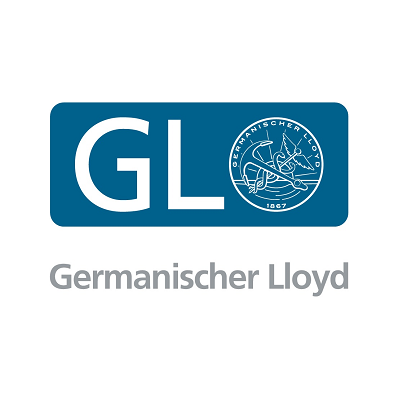
GLloyd VI-7-2
GLloyd VI-7-2 Test Requirements for Electrical / Electronic Equipment and Systems The Germanischer Lloyd SE was a classification society that conducted safety surveys on more than 7,000 ships with over 100 Mio GT.  Its technical and engineering services also included the mitigation of risks and assurance of technical compliance for oil, gas, and industrial installations, as well as wind energy parks. These Guidelines apply to electrical, electromechanical and electronic equipment, computers and peripherals. The scope of the tests required for a specific product will be determined on a case by case basis by GL depending on the product, its use and the environmental category to which it belongs.

GM 9105P
GM 9105P Immunity to Conducted Transients EMC - Component Test Procedure This component-level test procedure applies to automotive electronic and electrical components intended for vehicle use. It evaluates their immunity to potential interference from conducted transients. It applies to transients that may appear on the battery feed (B+) or switched ignition connections to the component. It also applies to the components input/output (I/O) lines that connect to a load where that load is fed by B+ or switched ignitions. Presently this procedure does not apply to other I/O lines of the device under test. Note: this standard has been replaced by GMW 3097. Preview Standard

GMW3097
GMW3097 General Specification for Electrical/Electronic Components and Subsystems, Electromagnetic Compatibility This GM standard specifies the EMC requirements for all automotive products when evaluated in accordance with the test procedures contained within this document. It refers to International EMC Standards whenever possible, but also describes internal test procedures if necessary. This standard is one out of a series of three global Electromagnetic Compatibility (EMC) standards documents that specify EMC test and validation requirements. The complete series consists of the following documents:
- GMW3091
- GMW3097
- GMW3103

GMW3100
GMW3100 General Specification for Electrical/Electronic Components and Subsystems; Electromagnetic Compatibility: Verification Part This document applies to the Electro-magnetic Compatibility (EMC) of electrical / electronic components and subsystems for passenger vehicles, light duty trucks and medium duty trucks. It is accepted by all parts of General Motors (GM) and, there-fore, applicable to all GM automotive products world-wide. This document is one document out of a series of six global EMC documents which specify EMC test and validation requirements. The complete series consists of the following documents: GMW3091, GMW3094, GMW3097, GMW3100, GMW3103 and GMW3106. Preview Standard

GMW3172
GMW3172 General Specification for Electrical/Electronic Components - Environmental/Durability This standard applies to Electrical/Electronic (E/E) components for passenger or commercial vehicles and trucks. The standard describes the environmental and durability tests for E/E components based on mounting location. This standard specifies Environmental/Durability requirements and Analytical/Development/Validation (A/D/V) activities for E/E components that are used in a vehicle environment to ensure reliability over a life time. Preview Standard

GOST 28751-90
GOST 28751-90 Electrical Equipment for Vehicles. Electromagnetic Compatibility. Electrical Disturbance by Conduction along Supply Lines. Requirements and Test Methods This standard applies to newly designed electronic and electrical products (hereinafter referred to as products) intended for use in motor vehicles and establishes requirements for their electromagnetic compatibility for conductive interference in on-board networks with a nominal voltage of 12 and 24 V, as well as test methods. General Provisions Electromagnetic compatibility of products is characterized by noise immunity to conductive interference of the vehicle's on-board network, as well as the level of its own conductive interference measured at the power terminals. The requirements for electromagnetic compatibility should be established in a differentiated manner in accordance with the requirements of this standard. The main factors in this should be the conditions of use, as well as the functions that the products must perform in the car. When these requirements are fulfilled, the products are considered compatible. The conformity of the product to the requirements of this standard should be checked when the products are put into production, as well as when the design of the products or the manufacturing technology changes, if these changes can affect the requirements for their electromagnetic compatibility. Preview Standard

Hyundai ES 39110-00
Hyundai ES 39110-00 Electromagnetic Compatibility Specification for Motor Vehicles. Requirements and Test Methods

Hyundai/Kia ES 96100-02
Hyundai/Kia ES 96100-02 Automotive OEM Specification for Motor Vehicles. Requirements and Test Methods.

Hyundai/Kia ES 96200-00
Hyundai/Kia ES 96200-00 Electromagnetic Compatibility Specification for Motor Vehicles. Requirements and Test Methods

Iveco 16-2101
Iveco 16-2101 Resistance to Electromagnetic Disturbances Induced Type of Electronic Devices for Motor Vehicles

Iveco 16-2103
Iveco 16-2103 Resistance to Temporary Disturbances and Voltage Oscillations on Power Supply Lines of Electric and Electronic Systems Installed on Bench
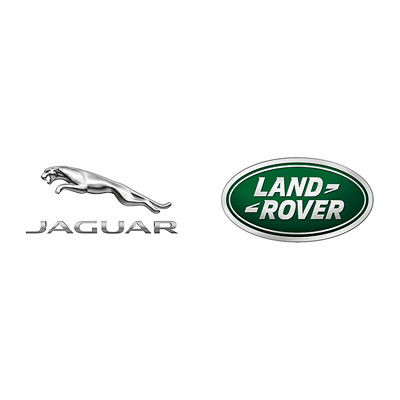
Jaguar CI 265
Jaguar CI 265 Electromagnetic Compatibility Specification for Electrical/Electronic Components and Subsystems - Immunity to Low Voltage Transients The purpose of this standard specifies requirements related to immunity from conducted transients on power and control circuits connected directly to the vehicle's battery or indirectly by a switch or load (e.g. pull-up resistor). These requirements are applicable to the following component categories:
- Electronic Modules
- Electric Motors
- EM Passive Devices

Jaguar EMC-CS-2010JLR v1.2
Jaguar EMC-CS-2010JLR v1.2 Electromagnetic Compatibility Specification for Electrical/Electronic Components and Subsystems This engineering specification defines the Electromagnetic Compatibility (EMC) requirements, test methods and test procedures for electrical/electronic (E/E) components and subsystems used by Jaguar, Land Rover (JLR). The purpose of this engineering specification is to ensure vehicle Electromagnetic Compatibility. This specification presents EMC requirements and test methods that have been developed for E/E components and subsystems independent of the vehicle. The purpose of component and subsystem testing is the pre-qualification of EMC at a time when representative vehicles are not yet available. Preview Standard

Kia/Hyundai ES 95400-10
Kia/Hyundai ES 95400-10 Environmental Reliability Test Specification of Electronic Devices for Motor Vehicles
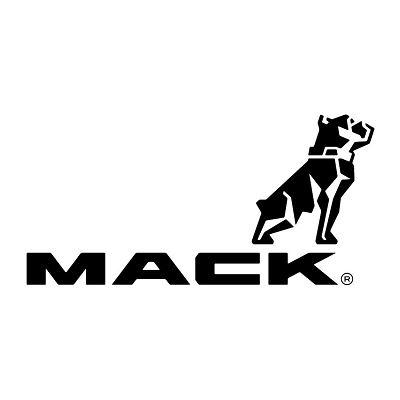
Mack Trucks 606GS15
Mack Trucks 606GS15 Electromagnetic Compatibility Specification - EMC Requirements

MAN 3285
MAN 3285 Electromagnetic Compatibility Specification for Vehicles - EMC Requirements

Mazda MES PW 67600
Mazda MES PW 67600 Automobile Parts Standard - Electronic Components and Devices

Mercedes-Benz A 211 000 42 99
Mercedes-Benz A 211 000 42 99 Instruction Specification of Test Method for E/E-Components

Mercedes-Benz MBN 10284-2
Mercedes-Benz MBN 10284-2 EMC Performance Requirements - Component Tests This engineering standard defines the EMC performance requirements for electrical and electronic components and systems in vehicles. It describes the test methods and specifies the test levels and limits. The objective is to assure the electromagnetic compatibility (EMC) of vehicles. This standard applies to all electrical and electronic components and systems installed in Daimler vehicles. It shall be used in combination with MBN 10284-1 that defines the EMC performance requirements for vehicle tests. Preview Standard

Mercedes-Benz MBN 10615
Mercedes-Benz MBN 10615 Electrical System Performance Requirements for Electrical and Electronic Components This engineering standard defines the electrical performance requirements for electrical and electronic components used in DaimlerChrysler vehicles and applies to all electrical and electronic components designed for 12 V nominal voltage that reference this standard. The purpose of this joint engineering standard is to ensure compatibility between the vehicle electrical power system and the electrical and electronic components in the vehicle. To support this, component requirements and tests are defined in this standard. The purpose of component testing is qualification of components from the supplier to meet vehicle requirements at a time when representative vehicles are not yet available.

Mercedes-Benz MBN 22100-2
Mercedes-Benz MBN 22100-2 Electric / Electronic Elements, Devices in Trucks

Mercedes-Benz MBN LV 123
Mercedes-Benz MBN LV 123 Electrical Characteristics Electrical Safety High Voltage Components Road Vehicles - Requirements Tests

Mercedes-Benz MBN LV 124-1
Mercedes-Benz MBN LV 124-1 Electric and Electronic Components in Motor Vehicles up to 3.5t Part 1: Electrical Requirements and Test 12V On-Board Electrical System Electrical requirements and Tests - LV 124-1: E-01 to E-22

Mercedes-Benz MBN LV 148
Mercedes-Benz MBN LV 148 Electric / Electronic Components Vehicle 48V - Vehicle Electrical System Requirements and Tests Electrical Requirements and Tests - LV 148: E48-01 to E48-21

Mitsubishi ES-X82010
Mitsubishi ES-X82010 General Specification of Environment Tests on Automotive Electronic Equipment
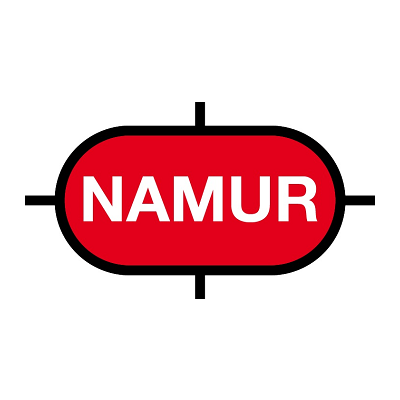
Namur NE 21
Namur NE 21 Electromagnetic Compatibility (EMC) of Industrial Process and Laboratory Control Equipment This recommendation describes uniform practical procedures for determining whether the devices used in laboratory and process control are immune to interference. The objective is to increase the functional safety of equipment. Based on past experience, most of the interference effects are covered by this recommendation. These requirements have been taken into account during the preparation of IEC/EN 61326-3-2. For specific applications, it may be necessary for the manufacturer and the user to make special arrangements regarding the requirements with respect to type, scope and degree of immunity to interference. General technical discussion of NE 21 has taken place and the recommendation has, in part, been revised. It has thus been adapted to take current marginal conditions and constraints in members- companies into consideration. The following changes were realized:
- The Evaluation criterion C in Chapter 3 has been dropped.
- The frequency range during testing has been adapted to suit operational frequencies.
- An indication relating to informative measurements (100 kHz) was added.
- The interference emission was introduced in Chapter 5.
- The former appendix with the test report has been dispensed, as there was no practical necessity for it.
- All tests are conducted in compliance with the standards cited, with the exception of the deviations mentioned in Appendix A (informative). Appendix A illustrates the actual level of technical discussion at the time of publication of the recommendation.

Nissan 28400 NDS 02
Nissan 28400 NDS 02 EMC Requirements to Measure Resistance on Power Supply Lines for Electronic Equipment

Nissan 28400 NDS 03
Nissan 28400 NDS 03 EMC Requirements for Low Frequency Surge Resistance of Electronic Parts

Nissan 28400 NDS 05
Nissan 28400 NDS 05 Electrical and Electromagnetic Compatibility (EMC) Requirements for Electronic Parts

Nissan 28400 NDS 07
Nissan 28400 NDS 07 EMC Requirements to Measure Immunity against Low Frequency Surge (Induction Surge) of Electronic Parts

Nissan 28401 NDS 02
Nissan 28401 NDS 02 EMC Requirements of Electrical and Electronic Parts

Paccar CS0013
Paccar CS0013 (2003-11) Voltage Test Requirements for Electrical and Electronic Components

Piaggio 7431
Piaggio 7431 EMC Requirements for Immunity against Conducted Transient Disturbances

Porsche AV EMC EN
Porsche AV EMC EN Electromagnetic Compatibility Specification for Motor Vehicles - EMC Requirements and Test Methods
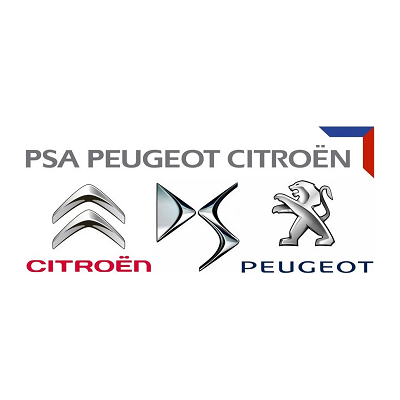
PSA B21 7110
PSA B21 7110 Technical Specifications Concerning the Environmental of Electrical and Electronic Equipment - Electrical Characteristics The object of this specification is to define the requirements to be observation in order to provide the electrical performance and electromagnetic compatibility (emc) of vehicles (passenger vehicles and light commercial vehicles and associated with electrical, electronic and pyrotechnic equipment. Preview Standard

Renault 36.00.400
Renault 36.00.400 Physical Environment of Electrical and Electronic Equipment

Renault 36.00.808
Renault 36.00.808-D/E/F/G/H/J/K/LÂ Resistance to Electrical Disturbances and Electromagnetic Compatibility Instructions Concerning Electrical, Electronic and Pyrotechnic Equipment The purpose of this standard defines the requirements for electrical behavior and Electromagnetic Compatibility (EMC) of on-board electrical electronic and pyrotechnic equipment. The requirements defined in these product specifications are referenced for tenders to suppliers. Each supplier can suggest adaptations of tests (methods, levels) resulting in cost reductions of the equipment or additions constraints without over-head costs. The equipment is validated when it meets test specifications for both equipment and for vehicles. The test on equipment shall be realized with an environment representative of the vehicles operating mode (system validation). The tests on Vehicle are used to make a final determination about electromagnetic compatibility performance of equipment.
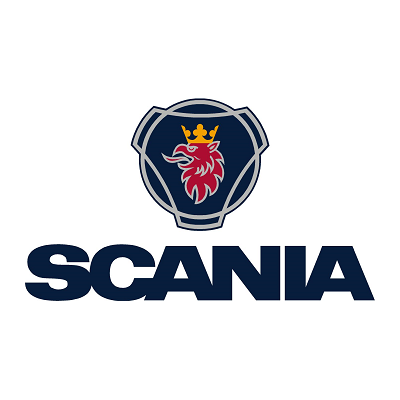
Scania TB1400
Scania TB1400 EMC Requirements for Electronic Control Units (ECU's), Sensors and Actuators

Scania TB1700
Scania TB1700 EMC Requirements for Electronic Control Units (ECU's), Sensors and Actuators

Scania TB1901
Scania TB1901 Requirements and Verification Methods for Electrical Factors in a 24V System

Smart DE1005B
Smart DE1005B EMC Requirements (Electric Aggregate and Electronics in Cars)

Tata TST/TS/WI/257
Tata TST/TS/WI/257 EMC Requirements for Electrical and Electronic Components

Toyota TSC3500G
Toyota TSC3500G EMC Requirements for Electrical and Electronic Components in Vehicles

Toyota TSC3590G
Toyota TSC3590G EMC Requirements for Electrical and Electronic Components in Vehicles

Toyota TSC6203G
Toyota TSC6203G EMC Requirements for Electrical and Electronic Components in Vehicles

Toyota TSC7001G
Toyota TSC7001G Engineering Standard (Electric Noise of Electronic Devices)

Toyota TSC7006G
Toyota TSC7006G Bench Test Methods for Electromagnetic Interference Susceptibility of Automobile Electronic Equipment

Toyota TSC7021G
Toyota TSC7021G General Rule for Bench Test Method for Performance of Automotive Electronic Equipment under Fluctuating Power Supply Voltage

Toyota TSC7034G
Toyota TSC7034G Test Method for Electrical Disturbances of Parts to be subjected to EMC Certification

Toyota TSC7203G
Toyota TSC7203G Engineering Standard for Brake Control Computer (Voltage Drop / Micro Drops)

Toyota TSC7306G
Toyota TSC7306G Bench Test Methods for Electronically Controlled Functional Body Components

UNECE R10 (Automotive)
UNECE R10 United Nations Economic Commission for Europe Regulation 10 - Automotive Electromagnetic Compatibility UNECE is the United Nations Economic Commission for Europe which is the body which has responsibility for implementing global trade agreements within Europe. Car manufacturing is now a global business and so the common requirements and standards go much wider even than the European Economic Area. UNECE Regulation 10 requires manufacturers to gain type approval for all vehicles, electronic sub assemblies, components and separate technical units. Products that have direct control of the vehicles must not emit EMC emissions above the limits and must be immune to interference levels stated in the Regulation. Products without direct control only have to meet the emission requirements. The Regulation contains 3 groups of tests, narrow band emissions, broad band emissions and immunity tests, and their acceptance levels. Certain types of equipment are exempt from certain tests. Equipment for caravans and motor homes that operate when the vehicle is in use are included, but those that only operate when the vehicle is parked or are powered independently are excluded. The Regulation is enforced by a different body in each member state. In the UK, the responsible body is the Vehicle Certification Agency (VCA), which is an agency of the Department for Transport. The VCA practices worst case selection prior to testing. Testing must be conducted by an authorized lab or be witnessed by the VCA, for example if the manufacturer has their own test facility. VCA assessors will also examine quality control systems. Approved products should carry an 'e-mark' accompanied by a number which identifies the Member State that granted the type approval. Preview Directive

Volkswagen VW 80000
Volkswagen VW 80000 Electrical and Electronic Components in Motor Vehicles Up To 3.5t - General Requirements, Test Conditions and Tests This standard specifies requirements, test conditions and tests for electric, electronic and mechatronic components and systems for the use in motor vehicles up to 3.5t. Additional or deviating requirements, test confections and tests must be defined in the respective Component Performance Specifications. Note: The represented tests do not serve for component qualification or a qualification of the manufacturing process. Preview Standard

Volkswagen VW 80101
Volkswagen VW 80101 (2009) Electrical and Electronic Assemblies in Motor Vehicles Volkswagen standard VW 80101 specifies general design conditions for electrical, electromechanical and electronic components and systems in vehicles. When referring to this standard in component-specific technical supply specifications, drawings and performance specifications, table 27 (Section 8) must be used and substantiated with the appropriate specifications in consultation with the responsible Volkswagen Group engineering departments. General Requirements The requirements apply to the substantial operating voltage and operating temperature range. The functions and test conditions required for the other test must be abnormal monitored and documented (at least temperature and supply voltage as well as switching performance, volt-Age drops, load currents, closed-circuit current and bus messages including timing and content, Etc., where applicable). Preview Standard

Volkswagen VW 82148
Volkswagen VW 82148 Electrical and Electronic Components in the Motor Vehicle - 48 V Power Supply

Volkswagen VW TL 801 01
Volkswagen VW TL 801 01 Electric and Electronic Components in Cars

Volkswagen VW TL 820 66
Volkswagen VW TL 820 66 EMC of Automotive Electronic Components Conducted Disturbances This Technical Supply Specification (TL Standard) includes requirements and tests for determining the electromagnetic compatibility (EMC) of electronic components with respect to interferences due to the vehicle power supply system. These interferences are caused by electric and electronic components and affect power supply lines, signal and sensor cables that are directly or indirectly galvanically connected to the power supply lines (via switch or relay contracts or valves/actuators/sensors). Component related requirements (pulses) are specified in the respective drawings or in the Technical Supply Specification. Note: This Technical Supply Specification largely reflects the specifications in ISO 7637-1, -2. Preview Standard

Volkswagen VW TL 821 66
Volkswagen VW TL 821 66 Electromagnetic Compatibility of Automotive Electronic Components - Radiated Interferences This standard contains requirements and tests for determining the electromagnetic compatibility (EMC) of electronic assemblies with respect to radiated electromagnetic interferences coupled into the vehicle's supply and signal circuits and /or into assemblies. Preview Standard

Volkswagen VW TL 823 66
Volkswagen VW TL 823 66 EMC of Automotive Electronic Components Coupled Interference on Sensor Lines This Technical Supply Specification (TL standard) includes requirements and tests for ensuring electromagnetic compatibility (EMC) of electronic components with respect to interferences coupled in the vehicle's signal or sensor cables.

Volkswagen VW TL 824 66
Volkswagen VW TL 824 66 Electromagnetic Compatibility of Automotive Components - Immunity against Electrostatic Discharge This Technical Supply Specification (TL) contains requirements and tests to ensure electromagnetic compatibility (EMC) of electronic assemblies with respect to electrostatic discharges. These apply to discharges during: assembly, servicing, vehicle use that occurs directly on the assembly and to discharges to neighboring objects that can couple into supply and signal lines of the vehicle or into electric assemblies. Preview Standard

Volkswagen VW TL 825 66
Volkswagen VW TL 825 66 Electromagnetic Compatibility of Automotive Components - Immunity to Magnetic Fields

Volvo EMC Requirements
Volvo EMC Requirements - Electromagnetic Compatibility (EMC) Specifications for Electrical/Electronic Components and Subsystems

Volvo STD 515-0003
Volvo STD 515-0003 Electromagnetic Compatibility (EMC) Parts and Components A component must function as intended when installed in a vehicle’s electrical system. Furthermore, it shall not degrade the electrical environment in which it is installed. To ensure this, the levels of radiated and conducted emissions must be controlled. This also applies to the susceptibility, radiated as well as conducted. To be permitted to market our products, they must comply with relevant EC and other national regulations. Requirements on emission and susceptibility levels must be set and maintained in order to achieve the following targets:
- Make the complete product compliant with relevant EC and other national requirements
- Maintain our product responsibility
- Tests on vehicle are used to make a final validation
- Tests on device component/system are the supplier’s responsibility; tests on vehicle are the Volvo Group’s responsibility

